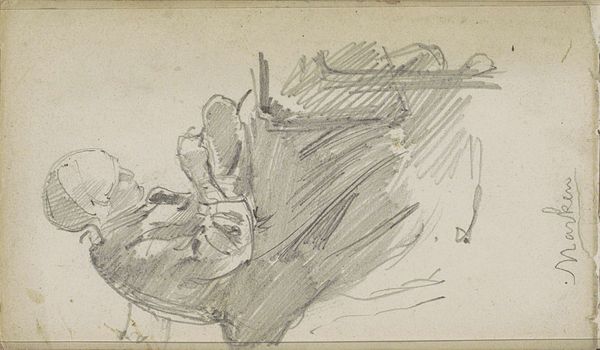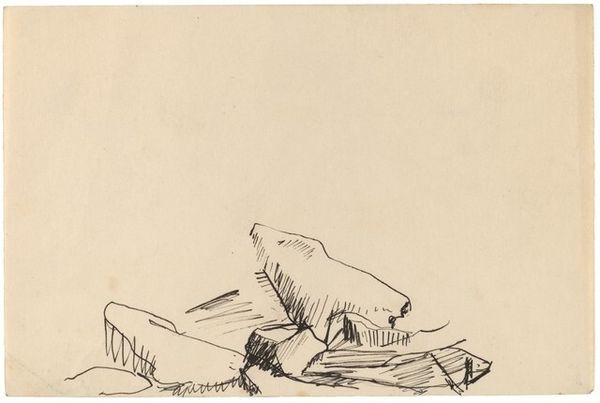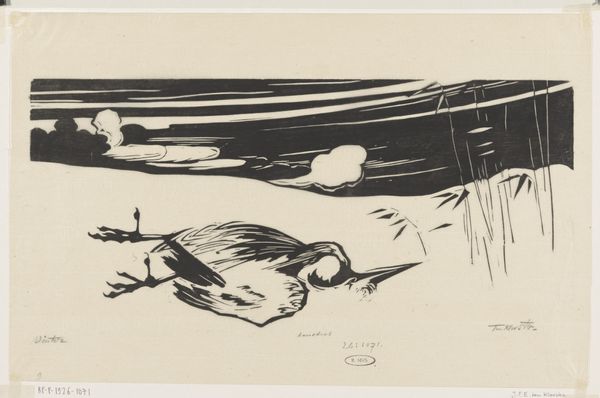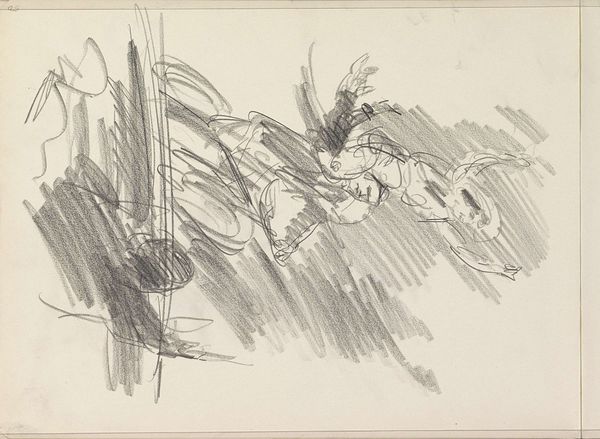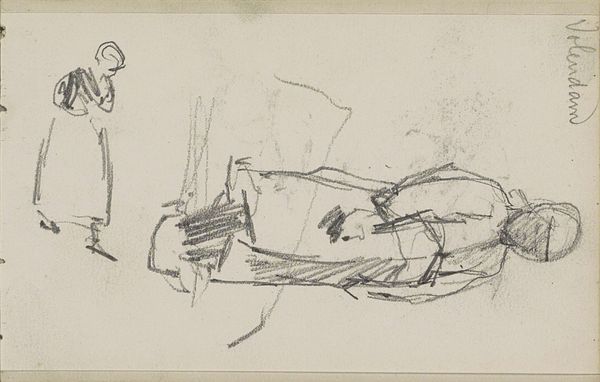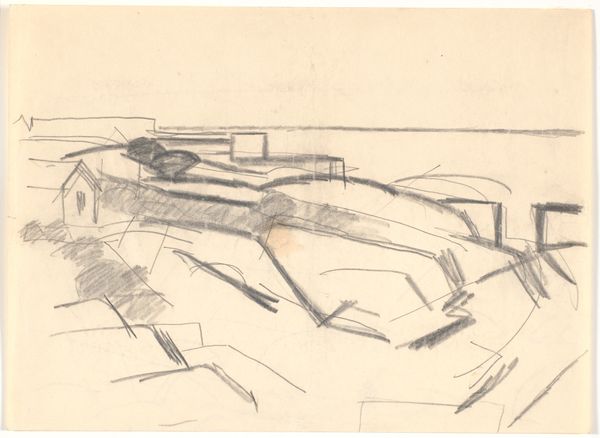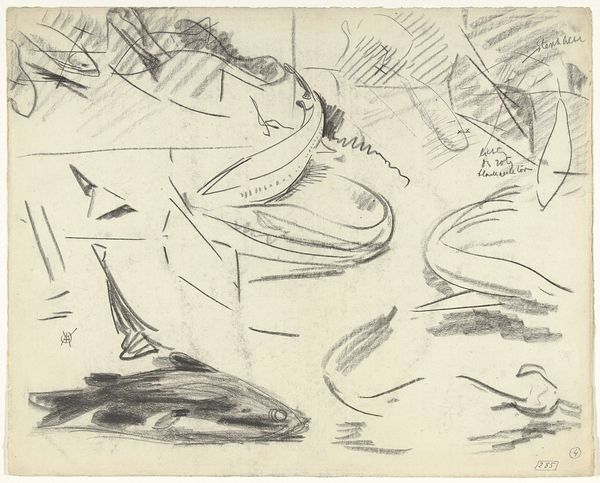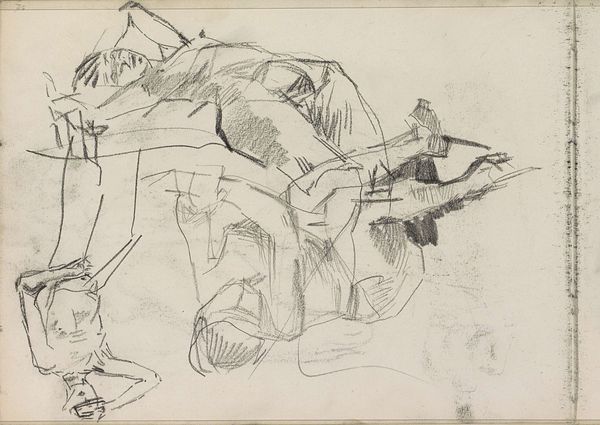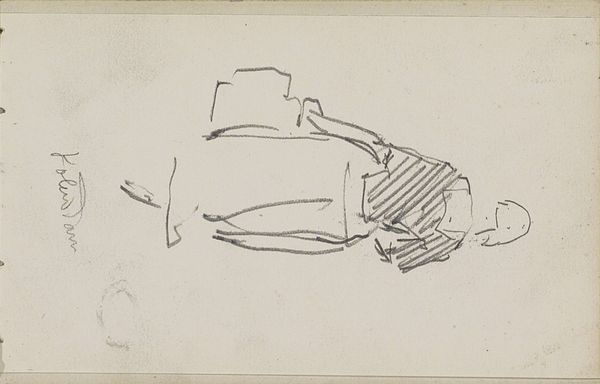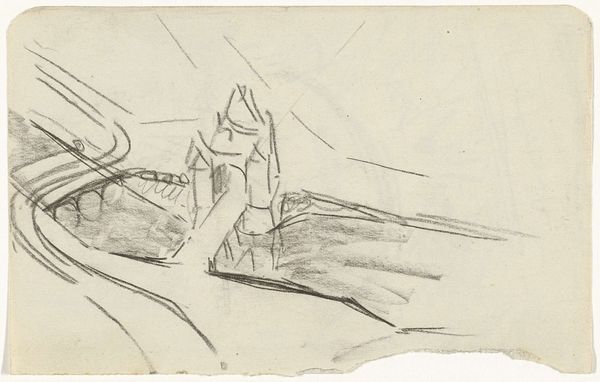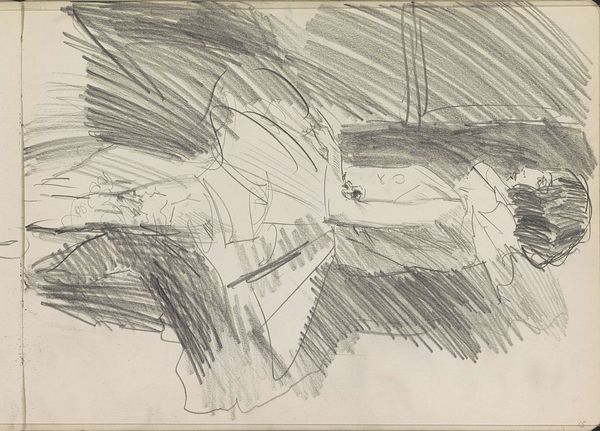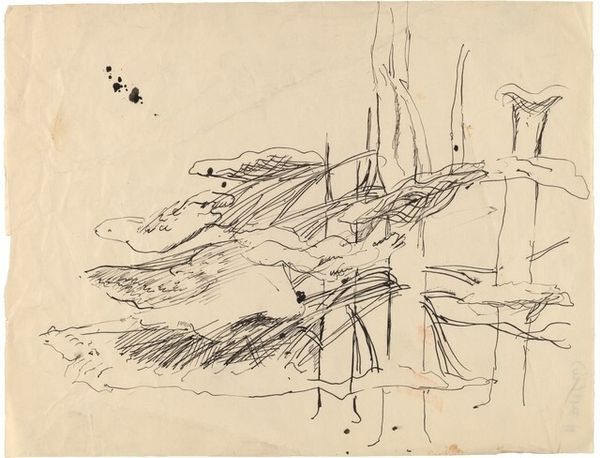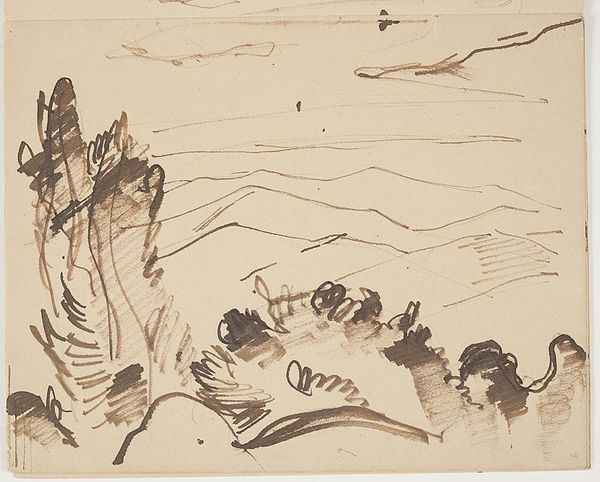
drawing, ink, pen
#
drawing
#
figuration
#
ink
#
pen
#
modernism
Dimensions: 234 mm (height) x 342 mm (width) (bladmaal)
Curator: Well, immediately the stark simplicity strikes me. The cross-hatching creates this profound sense of weight and shadow. Editor: Indeed. What we are looking at is a work on paper by Niels Larsen Stevns. Executed in pen and ink between 1937 and 1938, this drawing is titled "Den helbredte, knælende mod jorden," or "The Healed, Kneeling to the Ground". Curator: "The Healed…" You know, without that context, I might have interpreted that kneeling posture as one of exhaustion, of defeat even. The frantic, almost violent, application of ink – it communicates suffering to me. But healing… that offers a very different perspective. Editor: Consider the historical backdrop, though. The late 1930s were turbulent years in Europe, rife with anxieties and the looming threat of war. Is it possible to see this image not just as a study in individual healing, but as an allegory for a society grappling with profound wounds? Curator: It’s undeniable. And there’s that interesting compositional element. The subject takes up most of the field of vision and they seem weighted by the shading. The space is compressed, heightening the sense of confinement or struggle. It doesn't look like someone kneeling to be healed - or someone thanking god. I would argue the technique reflects that anxiety whether the title indicates otherwise or not. Editor: The location of this piece also matters: SMK – Statens Museum for Kunst, the Danish National Gallery. The context within a national collection adds to its interpretation, placing it within a canon of artistic exploration. Are we as a culture more obsessed with broken bodies than repaired ones? Is there a political undertone to an image with an apparently biblical source? Curator: These questions, I think, get to the very heart of why we’re drawn to art. It transcends pure representation. This drawing’s impact is in its immediacy. The rapid, gestural strokes allow us a raw insight. I would go back to composition and consider how that frantic application might affect some. I find the marks moving to witness. Editor: So, ultimately, whether viewing this from a Formalist's eye or a Historian's lens, there's so much richness to be unearthed from what appears initially to be a simple sketch. Curator: Yes, it's an excellent demonstration of how intention can evolve through technique.
Comments
No comments
Be the first to comment and join the conversation on the ultimate creative platform.
